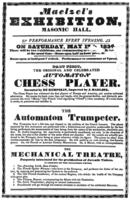
If you want to see some amazing illustrations, of a timeless story, be sure and check out Illuminated Books' Pinocchio.
I discovered Illuminated Books thanks to another amazing site, Bibliodyssey...

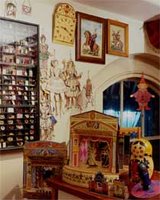 Louise Heard from Pollocks Toy Shop checked in today with a late - but in time, which is what counts! - announcement of a toy theatre exhibition and sale going on right now through this weekend at the Spring Decorative Arts & Textiles Fair...
Louise Heard from Pollocks Toy Shop checked in today with a late - but in time, which is what counts! - announcement of a toy theatre exhibition and sale going on right now through this weekend at the Spring Decorative Arts & Textiles Fair... It's a comprehensive exhibit with original scenery, model theatres and related history as well as theatrical portraits, tinsels some of which are for sale.Great news for lucky toy theatre enthusiasts in the UK!
The show is on today until Sunday. We are also selling some theatres, cards and some original plays and portraits. Peter Baldwin will be there on Saturday and can sign copies of his book (selling at a special Fair price...)

After much playing about with spreadsheets and costs I am afraid that I have been forced to abandon my plans for a toy theatre play DVD. The idea was OK and several helpful people, to whom I am most grateful, helped to flesh it out towards a decent product thought. However, the time and cost seems large whilst the potential audience seems all too small so it could not be self financing as I had hoped. Sorry. It was just not practical.My response:
The toy theatre archive we are creating (Pollocks, Hugo Brown and I) is slowly growing and this year may have all the sheets finally catalogued and filed for public access (viewing by arrangement only to protect the material).Adding footage of live or animated performances to the archive would increase its usefulness and I am sure some toy theatre people would like their work to be seen.
So, if anyone has photographs, film, video tape, CD, DVD or images in any format whatsoever of their own or other people's toy theatre performances then I would love to arrange to acquire a copy for the museum archives if you would care to give a copy to us for posterity (or as much posterity as we can provide anyway!)
Paul:Yes, everyone reading this - what do YOU think? If you can help make this happen, feel free to contact me, and I can put you in touch with Paul...
I was afraid cost would be the doom of such a project. Hopefully, those that have footage already will step forward, due to your request.
It's too bad no one thought of documenting Hugo and you as you've been doing this - filming you as you do the cataloguing, interviews, shots of the various sheets and theatres, the artifacts in the "bowels of Pollock's" (the plates, etc.) - the cost could have been covered by the BBC or similar organization. You guys are a national treasure in my book. Is it too late to do that, to approach them to cover the cost and capture some of this before it's too late...? [Maybe Peter Baldwin could be approached, use his contacts at the BBC, and have an influence to get this started...?]
What do you think?
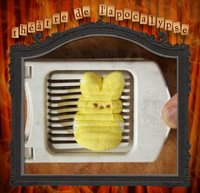 If you have a twisted sense of humour (as I do), you'll appreciate these slightly bent adventures of marshmallow bunnies, some presented in a theatrical wrapping...
If you have a twisted sense of humour (as I do), you'll appreciate these slightly bent adventures of marshmallow bunnies, some presented in a theatrical wrapping...
I am about to go out and give your theatre the shellacking of it's life! Everything else is done except for a cover for the footlight hole. (Middle of the night last night, 'the voice' said - "you really ought to figure out how to put something in that hole until she gets footlights. It looks less spectacular than the rest of the thing.")Later in the day, she writes again...
The Grrip glued worked wonderfully, the proscenium pieces went together just right. George figured out how to make the hasp gizmos work, so the proscenium comes apart and lays flat easily, and I figured out just how to attach the proscenium to the theatre base. The orchestra piece is covered in muslin, same as the front, and I put a back on the base "box". Pictures will be taken tonight. (And we will try very hard not to send such huge files. New camera, new software. Learning curve.)
Next step is to make a parts list, and instructions for you for putting the theatre all back together when it arrives. And I have to make a crate (only kidding, a box) in which to ship this creation. I have been debating whether to put a bottom on the theatre base, to give you a "right side up box" to store everything in. Or you could just use the shipping box. The plan is to use hardboard for the bottom, which will add to the shipping weight. What do you think?
More news as we get close to "done". Any statement like, "It shouldn't take long to shellac the parts of the theatre." is erroneous.Glad to hear you're writing me instructions, Ann...Lord knows I'll need it, greenhorn that I am!
Sand, then wipe, then dilute the shellac, then brush it on, then it dries, and one sands, wipes and shellacs, undiluted, again. Took most of the day. All the pieces are hanging by their little bolt holes on hooks bent from wire coat hangers on our hand puppet stage frame. I would like to get a shot of that, if George gets close enough to getting the taxes done to swing free to take pictures.
Went down to the lumber store, and they cut me a piece of thin hardboard to the right size for the bottom, and cut our piece of luan for a new floor (we buy a big piece, and then take it back when we know what size we want cut, and they cut it for free!). I just wasn't satisfied with my cut of the curve for the front, and I would like the floor to overhang the back piece. So now I have to shape the floor once again. This time I WILL get it perfect. All of the instructions for you are written in long hand, I just have to type them into the computer. I can type fast enough. And there is a bit more little stuff, while the shellac dries on the new floor. (p.s., the lumber store would like to see the theatre before I ship it off. They are quite intriqued!)

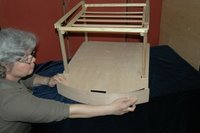 Awhile back, I commissioned Ann Neff to build a traditional wooden toy theatre. I would have loved to have done it myself, but alas, I live in a wee apartment and no access to a shop.
Awhile back, I commissioned Ann Neff to build a traditional wooden toy theatre. I would have loved to have done it myself, but alas, I live in a wee apartment and no access to a shop. March 28th - All right, progress continues. The orchestra piece is delightfully bowed, though I had to cut another orchestra piece and another floor to get it the way I wanted. (Don't worry, if we ever get the Reddington front, we will have all the pieces, "seconds", but usable.)
March 28th - All right, progress continues. The orchestra piece is delightfully bowed, though I had to cut another orchestra piece and another floor to get it the way I wanted. (Don't worry, if we ever get the Reddington front, we will have all the pieces, "seconds", but usable.)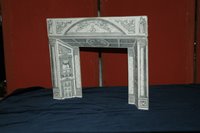 March 15th - I was able to work all day on the theatre, and tried out the latest scheme to hold the wooden pieces of the proscenium in the 3D position. Actually, I got the idea for a wooden tongue, on which the top piece sits, from the pictures of the rear of the Urania theatre that was recently offered on eBay. And it all went together! I used hinges on the lower uprights, the ones next to the inside of the opening, that attach to the angled upper piece. I works, but it fights. The next time (for yours) I will use a homemade "hasp" made from a mending plate. So the prototype worked.
March 15th - I was able to work all day on the theatre, and tried out the latest scheme to hold the wooden pieces of the proscenium in the 3D position. Actually, I got the idea for a wooden tongue, on which the top piece sits, from the pictures of the rear of the Urania theatre that was recently offered on eBay. And it all went together! I used hinges on the lower uprights, the ones next to the inside of the opening, that attach to the angled upper piece. I works, but it fights. The next time (for yours) I will use a homemade "hasp" made from a mending plate. So the prototype worked. March 11th - I am please to report that your toy theatre/stage is well under way. I will send some pictures when the pieces go together. I've got all the parts done. The hardest part was conceptualizing the thing from the instructions I downloaded from your website.
March 11th - I am please to report that your toy theatre/stage is well under way. I will send some pictures when the pieces go together. I've got all the parts done. The hardest part was conceptualizing the thing from the instructions I downloaded from your website.
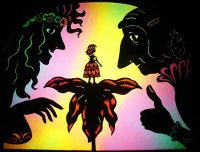 The Oregon Shadow Theatre are a wonderful group out west that produce and perform traditional and modern shadow theatre.
The Oregon Shadow Theatre are a wonderful group out west that produce and perform traditional and modern shadow theatre.  Last week I heard from Louis Heard, Pollock's Toyshop, about an exhibition they participated in...
Last week I heard from Louis Heard, Pollock's Toyshop, about an exhibition they participated in... Just thought I'd send you some photographs of our recent show in London. We were asked by Maynard Leigh, a business that uses theatre ideas in people development to show in their exhibition space over the Christmas period.As the business was based in Leonard Street in the East End of London which is very close to where the original Pollocks toy theatre shop was and itself the address at which A.Park, a generation of toy theatre publishers were based in the mid 19th century.
This led me to do a pictorial history of the toy theatre publishers. I had to use a certain amount of artistic licence but it shows what a Londoncentric trade it was.
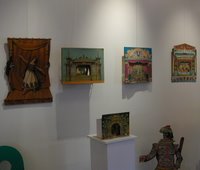
 There are so many incredibly talented people in the arts today. Some of them work in areas that touch toy theatre and puppetry in abstract ways, but still owe a solid debt to those that came before them.
There are so many incredibly talented people in the arts today. Some of them work in areas that touch toy theatre and puppetry in abstract ways, but still owe a solid debt to those that came before them. I love this ad that premiered during a recent sports event; it's got imagination, wonder, and a lot of talent behind it. It incorporates puppetry, specifically paper/stop motion. It has a bit of shadow play in one part with a dragon. Just marvelous...
I love this ad that premiered during a recent sports event; it's got imagination, wonder, and a lot of talent behind it. It incorporates puppetry, specifically paper/stop motion. It has a bit of shadow play in one part with a dragon. Just marvelous...
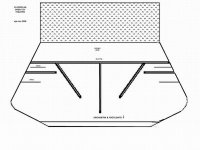
 The Royal Suitcase Theatre are actually two very talented people, Gérard Schiphorst and Marije van der Sande. The wordless performances, absurd and silly, are done using objects that most people don't ordinarily think of as props, let alone performers, but that make perfect sense when you fall under their spell...
The Royal Suitcase Theatre are actually two very talented people, Gérard Schiphorst and Marije van der Sande. The wordless performances, absurd and silly, are done using objects that most people don't ordinarily think of as props, let alone performers, but that make perfect sense when you fall under their spell...
 Drew MacDonald-Smith contacted me today about a contest he's in, soliciting my support in his efforts to win a chance to perform for a group he greatly admires. After viewing the three finalists' videos, of which Drew is one, I told him sure, they were a lot of fun. I encourage you to take a look, and vote for the person you like...I have to admit though, there is something about Drew's presentation I do like. It's got a sweetness to it, and made me really smile.
Drew MacDonald-Smith contacted me today about a contest he's in, soliciting my support in his efforts to win a chance to perform for a group he greatly admires. After viewing the three finalists' videos, of which Drew is one, I told him sure, they were a lot of fun. I encourage you to take a look, and vote for the person you like...I have to admit though, there is something about Drew's presentation I do like. It's got a sweetness to it, and made me really smile.
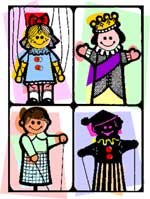
"...today we sent most of my collection to the Puppetry Arts Institute in Independence, Missouri where it will be on permanent exhibit after Feb.12 when we go there to help set it up (And celebrate my 80th birthday on the 13th!!!) I will miss my theatres.....but will rest easier knowing that they won't get wet in our next hurricane."
 Recently on the toy theatre email group, it has been a matter of spirited and exciting discussion on how to get a good video record of toy theatre performances. Many ideas have been discussed and there's been much brainstorming. Now, the question is, can the momentum be built on towards an actual finished product?
Recently on the toy theatre email group, it has been a matter of spirited and exciting discussion on how to get a good video record of toy theatre performances. Many ideas have been discussed and there's been much brainstorming. Now, the question is, can the momentum be built on towards an actual finished product?I just received a letter from the Board of Trustees of Puppeteers of America thanking me for contributing 4 DVDs of Toy Theatre Performances to the Audio-visual Library...which had NOTHING on the subject to date and interest in it is growing so fast.Now, the catch to seeing these is that you have to be a PoA member; I think I shall have to seriously consider becoming a member now...!!
Here is what is on them: George Speight in probably his final performance of The Miller and His Men...Peter Baldwin doing Black Eye'd Susan at the International Toy Theatre Fest in Preez Germany in 2004...and Dirk Reimers at the same fest performs The Fairies's Island. On the second DVD, Barry Clarke does Blackbeard the Pirate...Joe Gladwin does Beauty and the Beast, Robert Poulter does 8 1/2 - History of Opera in 8 1/2 minutes - and Konjecture - a study of progress / Development / conflict...and Merry Margate. On the 3rd DVD Ted Hawkins in Blackpool England includes performance by Peter Baldwin, Pauline Venables, Peter and Sylvia Peasgood....and then a wonderful section of Ted's award-winning model theatre of the Boston Opera House...including a performance of Children in the Wood AND Brian Rogers does his incredible version of Around the World in Eighty Days...followed by a review of some of the tricks and how they are done.
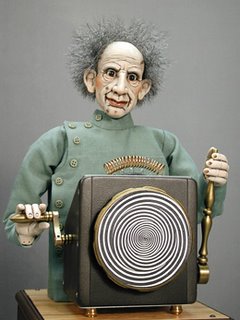
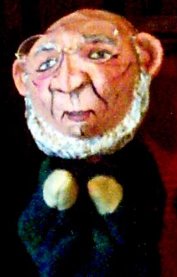

The survival of English toy theatre into the present age owes much to the enthusiasm and passion of George Speaight, who has died aged 91.
 An amazing website called Early Visual Media has come to my attention.
An amazing website called Early Visual Media has come to my attention.  "J.B. Priestly wrote a play for the Toy Theatre and George Bernard Shaw wrote one for marionettes, while theatrical genius Gordon Craig wrote copiously in praise of the puppet..."
"J.B. Priestly wrote a play for the Toy Theatre and George Bernard Shaw wrote one for marionettes, while theatrical genius Gordon Craig wrote copiously in praise of the puppet..."

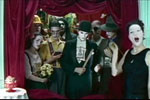

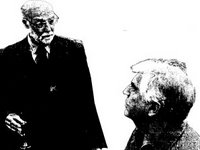


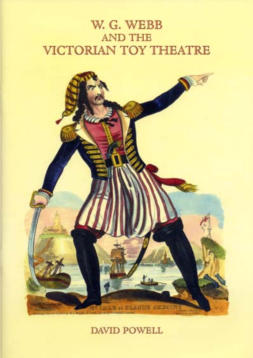
 I apologize for being a bit late on sharing this, but I only found out about it tonight. Thankfully, it runs until November 6th, so if you want to take it in, and you're lucky enough to be near London, you still have a chance...
I apologize for being a bit late on sharing this, but I only found out about it tonight. Thankfully, it runs until November 6th, so if you want to take it in, and you're lucky enough to be near London, you still have a chance...More than a century before the arrival of ultraviolent computer games such as Grand Theft Auto, in which it's run-of-the-mill to slash bystanders with a chainsaw before grabbing a burger, British children were enjoying toys that were technologically more simple but no less bloodthirsty.From The Daily Telegraph, 16 July 2005.
An exhibition opening today at the Museum in Docklands charmingly illustrates this point. Devoted to the vogue for toy theatres that flourished in the 1820s and '30s, the show contains 35 pristine examples, including the cardboard cut-out above.
"Toy theatres were incredibly popular with young teenagers," says curator Beverley Cook. The 2-D actors played out scenes from sensationalist plays of the period, featuring villainous folk heroes such as Dick Turpin and Blackbeard. "Children would come out of the London theatres and buy a recreation in flat form of the play they'd just seen," says Cook. "You could buy a single scene or, if you had enough money, the whole play, which might be up to 30 sheets. Often, the publishers printing these sheets were based near the theatres. It was merchandising - just as you can buy Star Wars figurines today."
This scene is the grim finale of The Corsican Brothers, adapted from a novel by Alexandre Dumas. The philandering Chteau-Renaud - you can make out his name on the strut connecting the duellists - skewers one brother with his sabre. The play was first staged in 1852, but this cut-out version didn't appear for nearly 25 years.
"Lots of these plays ended with a fight scene, a death or some kind of explosion," says Cook. "Violence was common, so the popularity of toy theatres doesn't surprise me at all. Boys have always played with swords and guns."
'Heroes or Villains?' is at the Museum in Docklands, London, until November 6.
WE HAD a great toyshop at the end of our street when I was of Meccano and Plasticine age. Not that it sold either product. In fact the marvellous toyshop didn't sell toys at all, but it did stock a wide range of empty packing cases, cardboard boxes, wooden crates and suchlike grocer's debris, all of which were ours for the taking.From "How Our Children can Box Clever", by Keith Waterhouse, Daily Mail, 29 September 2005.
Thus, before they were snatched up for bonfire night, I took possession of the raw materials for a model theatre, a farm, an aerodrome, a battlefield, a village, and with the help of a little builder's sand, a seaside resort.
Nor was I the only one hard at it in Santa's cardboard workshop. Every year when the fair - or feast as we call it up there - came to town, we first of all squandered our pocket money on the dodgems and then set about constructing our own fairground out of cardboard boxes.
Roll- em- down stalls, flip-a- coin stalls, spinthe-wheel stalls (we didn't know the French for roulette) were the basic attractions. Marbles were brought into play, and the currency used was buttons snitched from workboxes or even, in desperation, clipped from school blazers and overcoats; but the principal ingredient was the humble cardboard box.
Thus when I learn from an academic outfit in Stockholm called the International Toy Research Centre that so- called educational toys are a waste of money and that children can learn just as much from playing with a cardboard box, I come out in favour of the cardboard box.
That model theatre I just mentioned was knocked up from half a dozen cornflake packets glued together, plus a strip of corrugated cardboard to form the proscenium arch.
It was, in rotation, a legitimate theatre, a music hall with cut- out crosstalk acts clipped from comic postcards, an opera house (the rights of my one-act operetta, Robin Hood, are still available) and even a military tattoo, with a cardboard Spitfire descending to the stage on a length of cotton.
And all handmade. My only concession to commercial interests was that I ran off the programmes on my John Bull printing outfit.
MY MODEL theatre (no one was allowed to call it a toy theatre) kept me enthralled until I was old enough to go to the grownup theatre. All this time I was learning my trade - or one of my trades. And not an educational toy in sight. And it all began with a cardboard box.
 This post is not toy theatre-related, but it is charming nonetheless. Someone in the toy theatre world shared it with me, and I adored the website design, as well as the creativity and passion of the work these people do that the site represents.
This post is not toy theatre-related, but it is charming nonetheless. Someone in the toy theatre world shared it with me, and I adored the website design, as well as the creativity and passion of the work these people do that the site represents.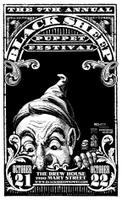
September 29, 2005
Hello everybody.
This time last month Katrina was just landing with the eye of the storm going directly over our place...and this is the first time I have had access to the Internet to receive all your great messages. We don't have phone service yet and was told not to expect if before November 19th...so, of course, no internet either. So I will be answering you individually when I can get back to this machine again...when we make it back to Gulfport next time...but I do want to get out a brief message to thank you all for your concern for us. There were lots of great offers of assistance...and we are absolutely glowing over the number of invitations we got to adopt us!!!
Glen and I are fine...though a bit shaken. We "rode out the storm" in my puppet studio in Diamondhead...which is the highest point on the Mississippi Gulf Coast. The mandatory evacuation notice for Diamondhead came so late that we got the car gassed up and then looked at the map for a destination...and the storm was so huge that we really couldn't find a place that was any better than where we were. The whole experience was very scary...and I can't even try to describe what we have (and don't have) left on the Gulf Coast. Nor can I describe the devastation here or the UTTER incompetence of FEMA to help us. They are just now setting up an office here. So we have been very dependent on the Red Cross and the good folks around the country who brought big trucks of food and other necessary supplies...and then stayed to help us.
Both of our houses here are still standing...though the one here in Gulfport (where I am now) got a good bit more damage then the one in Diamondhead. So I am still staying in the Diamondhead house...even without a phone and internet service. I do have a cell phone which is usable...though all the circuits are often busy. Getting around is still a problem as there is so much of a mess on the roads...and many bridges etc are gone altogether...and the supply of gas is limited and very high priced. We're just glad we came thru as well as we did...there were 2 known deaths in Diamondhead and a long list of missing people.
SOOO...since we made it through Katrina...followed by Rita...(and another one now in the Bahamas) our plan to go to London on the 9th of October is still in place. We hope to see many of you puppeteers at the Webb Fest...and then we plan to visit northern Scotland. We had hoped to visit Mike Bartley in Plymouth but were unable to get on that tour. We do SO look forward to this trip...We really need it! Wish I knew just the words to tell you how important you all are to us!! We needed to hear from caring folks...and you were all there!! Lots and lots of heartfelt thanks.
Oh yes, the Toy Theatres came thru just fine...but I have decided that collecting antique paper stuff in Coastal Mississippi is insane. Plan to place most of my collection in Kansas City at Diane Houk's Puppetry Arts Institute where more people will see them anyway...and just concentrate on doing models of prominent theatres in the U.S. So far we are concentrating on the Goldenrod Showboat and Ford's Theatre in Washington D.C.
All for now...more when I get back to Gulfport next time.
Much Love,
Gigi and Glen
 The Preetz Paper Theater Festival recently concluded in Germany. This annual festival began in 1988, and has become the largest international toy theatre gathering in Europe, perhaps the world.
The Preetz Paper Theater Festival recently concluded in Germany. This annual festival began in 1988, and has become the largest international toy theatre gathering in Europe, perhaps the world."Broadly then, what keeps adults from joining in children's games is, generally speaking, not that they have no pleasure in them; it is simply that they have no leisure for them. It is that they cannot afford the expenditure of toil and time and consideration for so grand and grave a scheme. I have been myself attempting for some time past to complete a play in a small toy theatre, the sort of toy theatre that used to be called Penny Plain and Twopence Coloured; only that I drew and coloured the figures and scenes myself. Hence I was free from the degrading obligation of having to pay either a penny or twopence; I only had to pay a shilling a sheet for good cardboard and a shilling a box for bad water colours. The kind of miniature stage I mean is probably familiar to everyone; it is never more than a development of the stage which Skelt made and Stevenson celebrated.From On Lying in Bed & Other Essays by G.K. Chesterton
"But though I have worked much harder at the toy theatre than I ever worked at any tale or article, I cannot finish it; the work seems too heavy for me. I have to break off and betake myself to lighter employment; such as the biographies of great men. The play of 'St. George and the Dragon', over which I have burnt the midnight oil (you must colour the thing by lamplight because that is how it will be seen), still lacks, most conspicuously, alas two wings of the Sultan's Palace, and also some comprehensible and workable way of getting up the curtain.
"All this gives me a feeling touching the real meaning of immortality. In this world we cannot have pure pleasure. This is partly because pure pleasure would be dangerous to us and to our neighbours. But it is partly because pure pleasure is a great deal too much trouble. If I am ever in any other and better world, I hope that I shall have enough time to play with nothing but toy theatres; and I hope that I shall have enough divine and superhuman energy to act at least one play in them without a hitch..."

 Shockheaded Peter is the gruesome, funny musical created by the eccentric British musical group The Tiger Lillies and experimental theatre mavens Phelim McDermott and Julian Crouch.
Shockheaded Peter is the gruesome, funny musical created by the eccentric British musical group The Tiger Lillies and experimental theatre mavens Phelim McDermott and Julian Crouch.By the way, for all of you who may want to see this production (myself included), there is a wonderful website put up by the New York production company, where you can sign up to be notified of the national tour dates, starting in 2006...

 Louise at Pollock's Toyshop in Covent Garden (UK), wrote to say that there is a new toy theatre* that has been recently published, and it is available through their website.
Louise at Pollock's Toyshop in Covent Garden (UK), wrote to say that there is a new toy theatre* that has been recently published, and it is available through their website. This weekend, I'll be interviewing founders and members of Great Small Works, a wonderful group of people who love, among other things, toy theatre.
This weekend, I'll be interviewing founders and members of Great Small Works, a wonderful group of people who love, among other things, toy theatre. * Meditations on a Magpie: the Work of Barry Cleavin, Printmaker, by Dr. Cassandra Fusco, a freelance writer from Christchurch, New Zealand; publisher will be the University of Canterbury's Canterbury Press
Cleavin: Theatres of War (2004).
Printed paper sculptures. Collection of the artist.
Notes: At first glance these works might recall children's pop-up books or the juvenile cut-out toy theatres of Pollocks of London originating in Victorian times and referred to by R.L. Stevenson in 'Memories and Portraits', chapter xiii. A Penny Plain and Twopence Coloured. These inexpensive paper cut-outs reproduced famous and favourite writings and could be coloured in and cut-out by children who could then act out the various stories and dramas.
In Cleavin's cut-out theatres strange dramas are played out. In these pictorial-cum-moral peep shows modern and archaic elements, in various scales, are brought into dramatic collision. Such compositions reject established rules of representation (including perspective) developed since the Renaissance and deliberately employ anachronistic imagery and scale reminiscent of medieval and primitive painters (who varied the size of their figures according to their importance). Cleavin uses such anachronisms to unsettle expectations and raise questions about the actions and relations dramatised. The concept behind them, their composition and titles, indicate that Cleavin considers continual acts of war and aggression unjustifiable and here invites audiences to look to the causes of such persistent patterns.
The 'Theatres of War' (2004), together with work by Nigel Buxton, Ralph Hotere, Marian Maguire, John Pule and John Reynolds, were part of an anti-war exhibition held at Papergraphica in Christchurch. This show, in many respects, repeated the concerns addressed by Cleavin and others in an exhibition titled, 'Artists for Peace' (1984), at The Robert McDougall Art Gallery, Christchurch.
Cleavin: Theatres of War (2004).
Printed paper sculptures. Collection of the artist.
Presented in the language of children's pop-up picture books or Benjamin Pollock's cut-out theatres, the casts of Cleavin's 'Theatres' include skeletal and ecorche figures, soldiers and arms, dinosaurs and popular cartoon figures.[6] These worlds of mixed visual events challenge not only warring powers, but also their analogues, the 'official' media and their versions of the various conflicts so often culpable of lionising war. These 'Theatres' also challenge us, an audience capable of participations of a different kind from those dramatised. Irrespective of the surreal pictorial idiom, these theatres of war images clearly relate to the Disasters of War' series by Callot and Goya, or the 'dumb shows' and stages of cruelty by Hogarth. They ask us if we assent to the events visualised.

Hi All,
I thought some of you may be interested in what we are doing at Pollock's toy theatres...
About 15:00 today Hugo Brown and I finished examining and cataloguing every original toy theatre printing plate stored here. There are many hundreds of these and over the past 6 months we have spent a number of Saturdays sitting in a basement for hours cleaning off decades of old packaging and trying to read 150 year old imprints through various levels and types of protective coating. Sadly many of the plates were made of zinc and a lot of these have been corroded beyond use but the rest, in fact the majority, are copper and have survived very well. Hugo is updating our database of these plates and will no doubt add this interesting list to his website anon.
The plates were all hand engraved of course and seeing the original source for the familiar, and some not so familiar, scenes from the plays has been a real treat. We now plan to start slowly cleaning and re-protecting them over the next 2 years or so. The larger plates used to print whole theatre fronts are particular exciting and the largest is a hand engraved copper for an entire 4d Redington proscenium. Hugo has also located the earliest Green theatre front plate engraved by his great, great, great, grandfather. Given time we hope to make some real prints from these and where we have good quality plates of characters, scenes wings etc,. we will no doubt try and get some new impressions from the copper. As far as we are aware this plate collection is the largest in the world.
The next and much larger task is to collate, sort and catalogue the tens of thousands of original printed sheets that wound up at Pollocks as we acquired each major publisher's catalogue and stock over the years. Hugo and I are maybe just 20% of our way through the entire collection and in a year or two we think we will have completed cataloguing all the sheets we have currently. Where we have duplicates we select the best examples as masters and we store one of each different print impression in colour and plain where we have them both. We intend to scan and archive all these and make them available for study at the museum. The Green publication files alone now take up about 1 meter of shelf space. As far as we are aware the sheet collection is the largest in the world and much of it was very generously donated by John Fawdry, who had kept it in France until this summer when it was merged with the vast collection already at the museum.
We have also collated and sorted about 125 different play texts, e.g. the written words for the plays produced in little books and that collection is now being catalogued and stored with the sheet collection for the relevant plays. These will also be scanned and made available for study.
If and when I next surface with any eyesight left blinking into the daylight from examining about a zillion paper toy theatre sheets then I will keep you all informed of our progress in preserving and charting the archaeology of toy theatre.
Paul J. Weighell
Pollock's Toy Theatres Limited
London
